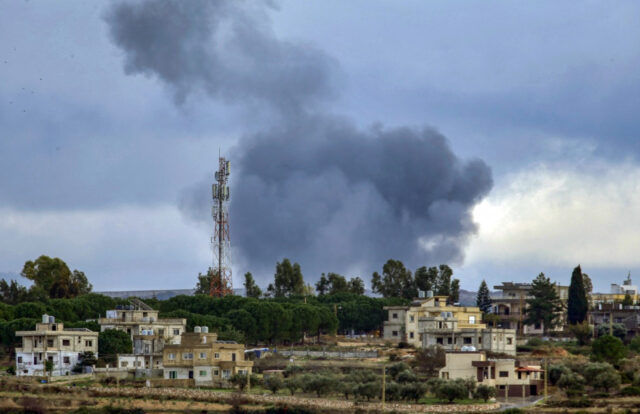This was the Hezbollah battle plan for their invasion of the Zionist State (Israel).
One of the main lessons Hezbollah learned from the Lebanon War was the need to change the goals of the next war against Israel.
Hezbollah sought to develop offensive capabilities that would enable it to conduct a war within Israeli territory.
Imad Mughniyeh, the architect of the plan, determined that in the next war, Hezbollah would invade, capture territories and take hostages in the Galilee (North Israel).
Hezbollah targeted areas where it had topographical superiority compared to Israel’s topographical disadvantage near the border.
The Plan Highlights
• Training Hezbollah’s special forces to take control of isolated Israeli towns along the northern border.
In Hezbollah’s terminology, this was referred to as the “Conquest of the Galilee.”
• Digging tunnels penetrating Israeli territory near Israeli settlements. These tunnels were intended for the passage of hundreds of fighters, not for the abduction of soldiers or civilians. Mughniyeh’s model was the North Korean infiltration tunnels, which Iranian instructors had studied closely.
• Hezbollah’s operational plan also involved building a massive missile-launching capability targeting population centers and strategic sites from the Haifa area in the north, through Tel Aviv in the center, down to Dimona in the south. Hezbollah’s concept was that this situation would attract all of Israel’s military attention, allowing Hezbollah’s special forces to execute the “Conquest of the Galilee” plan.
The Operational Plan
The source reported that Hezbollah’s operational plan, developed in coordination with senior Iranian strategic experts, is based on deploying a force of 5,000 fighters, recently trained in Iran specifically for this purpose. In another report, it was stated that Hezbollah forces recently completed intensive training in Iran and were deployed in southern Lebanon and the Beqaa.
It was also reported that in the Maydon area in western Beqaa, Hezbollah engineering units finished excavation work and position improvements, and Iranian Army engineering units mined areas in eastern Beqaa, marked as potential landing zones for Israeli special forces, whose goal would be to strike Hezbollah’s missile and artillery arrays.
- The 1st brigade will take control of the city of Nahariya, or parts of it, after crossing the border in the Rosh HaNikra area. According to Hezbollah’s information, the defenses in this area are minimal, the distance is short (7 km), and there are no special military or topographical features that would delay the brigade from achieving its objective.
- At the same time, a force of 150 fighters from the first brigade will reach Nahariya by sea using speedboats that Hezbollah already possesses. The mission assigned to this force is to take as many hostages as possible to prevent Israel from bombing Hezbollah forces in this sector.
- The 2nd brigade will take control of the town of Shlomi, which has a population of 6,500 and is located about 300 meters from the border. The goal is to sever the IDF’s supply lines and force it to send reinforcements from the east to areas in North Israel, where a large number of military forces are located.
- The 3rd brigade was instructed to reach the city of Karmiel and take control of areas south of it in order to block movement from Acre on the Mediterranean coast to Safed.
- The 4th brigade will take control of the the towns: Malkia, Ramot Naftali, and Yiftach to prevent the IDF from producing fire from these areas toward southern Lebanon.
- The 5th brigade will serve as a strategic reserve force assigned to special missions.
The Hezbollah-affiliated source reported that Hezbollah’s fighting force will consist of 5 brigades, each composed of 1,000 fighters. Each brigade has been assigned a defined combat zone in Israel to take control of. Therefore, each brigade is familiar with the structure and topographical conditions of its zone and has trained for its conquest.
This was the major attack against Israel that the IDF is currently destroying in Lebanon.
All this armed and trained by Iran.
Furthermore, Hezbollah has thousands more forces trained and prepared to attack Israel stationed in Syria and in Iraq.
Barry Shaw is Senior Associate for Public Diplomacy at the Israel Institute for Strategic Studies (IISS).


